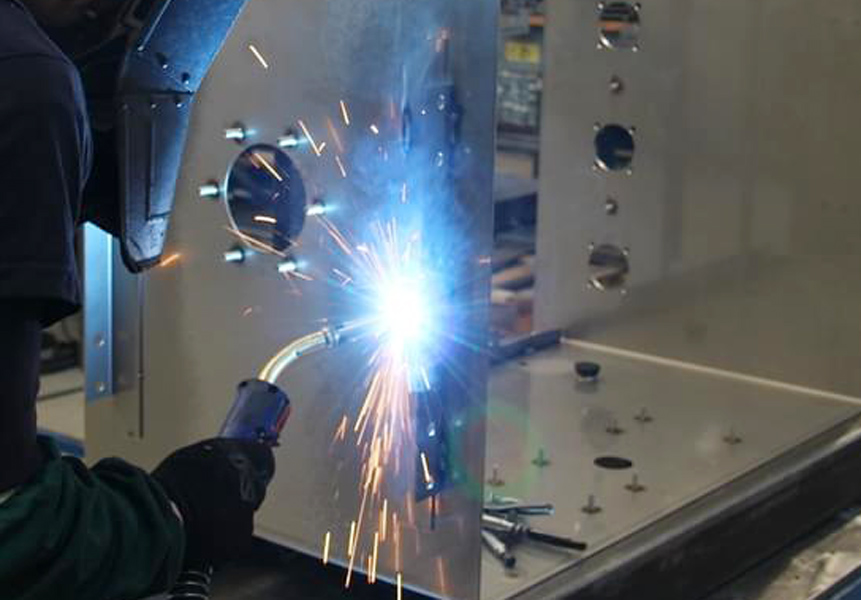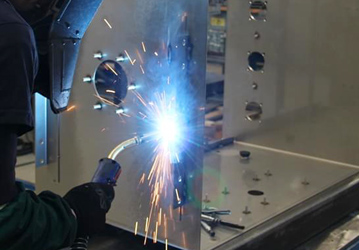Sheet metal welding is a specialized skill that requires precision and attention to detail. Unlike other forms of welding, TIG welding involves the use of a non-consumable tungsten electrode to create the weld. This makes it particularly well-suited for welding thin sheet metal, where heat control and precision are crucial. TIG welding offers a clean and precise weld, making it the preferred method for projects that demand both strength and aesthetics. Understanding the nuances of TIG welding settings is essential for achieving high-quality welds on sheet metal.

When working with sheet metal, it’s important to consider the material’s thickness and composition. Thin sheet metals are highly susceptible to warping and burn-through if the welding settings are not properly dialed in. Achieving the perfect balance of amperage, voltage, tungsten size, and gas flow rate is the key to successful TIG welding on sheet metal. Mastering TIG welding settings can open up a world of possibilities for fabricators, enabling them to tackle intricate projects with confidence and finesse.
Importance of Correct Settings in TIG Welding
The correct TIG welding settings are crucial for achieving clean, strong, and aesthetically pleasing welds on sheet metal. Inadequate settings can result in a range of issues, including excessive heat input, lack of penetration, and unsightly weld appearances. By understanding the impact of each setting on the welding process, welders can fine-tune their approach to deliver flawless results.
The right settings not only ensure proper fusion between the base metal and the filler material but also minimize the risk of distortion and burn-through. Whether working on automotive body panels, HVAC components, or artistic metalwork, the ability to dial in the perfect TIG welding settings sets the stage for impeccable craftsmanship.
Factors Affecting TIG Welding Sheet Metal Settings
Several factors come into play when determining the optimal TIG welding settings for sheet metal. The thickness of the sheet metal, the type of material being welded, and the joint configuration all influence the selection of welding parameters. Additionally, factors such as the type of shielding gas, tungsten electrode diameter, and welding technique contribute to the overall welding process.
Understanding the interplay of these factors is essential for achieving consistent and high-quality welds. For example, thinner sheet metals require lower amperage and heat input to avoid distortion and burn-through, while thicker materials may necessitate higher settings to ensure proper fusion. By considering these variables, welders can tailor their settings to suit the specific requirements of each welding project.
TIG Welding Sheet Metal Settings
Setting up the TIG welding machine for sheet metal involves a systematic approach to dialing in the appropriate parameters. Begin by selecting the correct tungsten electrode size based on the material thickness and type. Next, adjust the amperage and voltage settings to match the specific requirements of the sheet metal being welded. It’s crucial to strike a balance between heat input and travel speed to prevent overheating the material.
The choice of shielding gas also plays a significant role in the welding process. Argon is the most commonly used shielding gas for TIG welding, providing excellent coverage and stability. The flow rate of the shielding gas should be adjusted to create a consistent and protective atmosphere around the weld zone. By meticulously configuring these settings, welders can optimize the TIG welding process for superior results.
TIG Welding Techniques for Sheet Metal
Executing the right welding technique is as critical as setting the appropriate parameters. When TIG welding sheet metal, it’s essential to maintain a steady hand and precise control over the welding torch. A consistent travel speed and uniform bead appearance are indicative of a well-executed TIG weld. Employing techniques such as backstepping and stitch welding can help distribute heat and minimize distortion in the sheet metal.
Controlling the heat-affected zone is paramount when welding thin sheet metals, as excessive heat can lead to warping and deformation. By adopting proper torch angles and manipulation techniques, welders can ensure that the heat is concentrated on the weld joint, minimizing the impact on the surrounding material. Mastering these techniques is essential for achieving professional-grade TIG welds on sheet metal.
Common Mistakes to Avoid in TIG Welding Sheet Metal
Even with the right settings and techniques, TIG welding sheet metal presents challenges that require careful consideration. One common mistake is using excessive heat, which can result in burn-through and distortion. Conversely, inadequate heat input may lead to incomplete fusion and weak welds. It’s crucial to strike a balance and adjust the settings according to the specific requirements of the material being welded.
Another pitfall to avoid is neglecting proper fit-up and joint preparation. Inaccurate fit-up can lead to gaps and inconsistencies, affecting the overall quality of the weld. Thoroughly cleaning the base metal and using the appropriate filler material are equally important for achieving sound welds. By being mindful of these potential pitfalls, welders can elevate their TIG welding capabilities and produce exceptional results.
Testing and Adjusting TIG Welding Settings
Before committing to a full welding operation, it’s advisable to conduct test welds to evaluate the effectiveness of the chosen settings. Test welds allow welders to assess the penetration, appearance, and overall quality of the weld before proceeding with the actual fabrication. If adjustments are necessary, such as fine-tuning the amperage or gas flow rate, test welds provide an opportunity to optimize the settings without compromising the final weld.
Being receptive to feedback from the test welds enables welders to refine their approach and make informed adjustments. By iteratively testing and adjusting the TIG welding settings, welders can hone their skills and develop an intuitive understanding of the optimal parameters for various sheet metal applications.
Recommended TIG Welding Settings for Different Types of Sheet Metal
While there is no one-size-fits-all approach to TIG welding settings, certain guidelines can serve as a starting point for welding different types of sheet metal. For thin stainless steel sheets, a lower amperage range of 30-90 amps coupled with a smaller tungsten electrode size is typically recommended. Conversely, thicker aluminum sheets may require higher amperage settings in the range of 150-200 amps to achieve proper fusion.
Understanding the specific characteristics of each type of sheet metal, such as conductivity and thermal conductivity, is essential for tailoring the welding settings. By consulting welding charts and reference guides, welders can gain valuable insights into the recommended settings for various materials. However, it’s important to approach these recommendations as a baseline and fine-tune the settings based on the unique requirements of each welding project.
Conclusion and Final Tips
Mastering the art of TIG welding sheet metal settings is a journey that demands patience, practice, and a keen understanding of the welding process. By recognizing the importance of correct settings, understanding the factors that influence TIG welding parameters, and honing the necessary techniques, welders can unlock the full potential of TIG welding sheet metal. Testing and adjusting settings, avoiding common mistakes, and adhering to recommended guidelines are integral to achieving exceptional results.
TIG welding sheet metal settings are a critical aspect of delivering professional-grade welds that are both visually appealing and structurally sound. By embracing the intricacies of TIG welding settings, welders can elevate their craftsmanship and tackle a diverse range of sheet metal projects with confidence and precision. With a commitment to continuous improvement and a meticulous approach to setting up the welding parameters, welders can achieve flawless welds that stand as a testament to their expertise and dedication.
In summary, mastering TIG welding settings for sheet metal opens up a world of possibilities for welders, enabling them to push the boundaries of creativity and precision in their welding endeavors. Whether it’s automotive restoration, custom fabrication, or artistic metalwork, the ability to dial in the perfect TIG welding settings empowers welders to bring their vision to life with unparalleled quality and finesse.
